 Your new post is loading...
 Your new post is loading...
Around one-in-two wearable technology owners are aged between 20-39 years and are most likely to be independent young adults or adults with young children. Their personal income is 16% higher than the national average. Wearable devices are particularly popular with Wellingtonians.
Wearable technology owners are career-driven. Forty-two percent say they want to get to the top in their career. They are also more likely to say their work is more than a job, their work colleagues are among their best friends, and that they often respond to emails at home and on the weekend.
This group of consumers also live and breathe active lifestyles. Six-in-10 (59%) say exercise is an important part of their regular routine and 25% go to the gym at least twice a week. Around three-in-four (73%) say they try to balance healthy eating with their busy lifestyle....
London-based Vinaya is dedicated to creating what cofounder Kate Unsworth, a 28-year-old musician and former tech management consultant, calls "conscious technology for the mindful generation." The design firm’s chic wearables fit right in at luxury and fashion-forward retailers. Two more buzzed-about products are due to launch next year: AltruisX, a collection of rings, necklaces, and bracelets that filter mobile alerts and track smartphone usage, and Zenta, a "biometric" wearable that monitors the user’s physical and emotional well-being. And several designer collaborations are in the works....
While many companies, big and small, have been jumping into the wearables space in recent years, the use-cases for these devices often feels superficial — with fitness perhaps the most compelling scenario at this nascent stage. Yet smartwatches have far richer potential than merely performing a spot of sweat tracking.
The other problem with the current crop of smartwatches is the experience of using apps on wrist-mounted devices does not always live up to the promise of getting stuff done faster or more efficiently. Just having to load an app on this type of supplementary device can feel like an imposition.
If the primary selling point of a smartwatch is really convenience/glanceability the watch wearer really does not want to have to be squinting at lots of tiny icons and manually loading data to get the function they need in a given moment. A wearable needs to be a whole lot smarter to make it worth the wearing vs just using a smartphone.
At the same time, other connected devices populating the growing Internet of Things can feel pretty dumb right now — given the interface demands they also place on users. Such as, for example, connected lightbulbs like Philips Hue that require the user to open an app on their phone just in order to turn a lightbulb on or off, or change the colour of the light.
Which is pretty much the opposite of convenient, and why we’ve already seen startups trying to fix the problems IoT devices are creating via sensor-powered automation....
Consumers still aren’t completely sold on the idea of wearables. According to a survey of more than 1,000 American consumers by Colloquy, nearly two-thirds (63%) believe wearables are too expensive. At the same time, more than half (52%) said they don’t know enough to fully understand them. “The perception is because of the newness [of the devices], you’re going to pay more,” Jeff Berry, Colloquy’s research director, tellsMarketing Daily. “The ‘too expensive’ comment may be more about the perception of the devices than the reality for consumers.” Also, a third (35%) of consumers said they viewed the devices as a passing fad that may not be worth the investment....
Fossil Group, whose portfolio of brands includes Adidas Originals, Burberry and Diesel, on Tuesday announced at the 2016 Consumer Electronics Show in Las Vegas that it would launch more than 100 connected devices in 2016.
Fossil’s new wearables will include activity trackers and smartwatches for many brands including Misfit, the wearable technology brand that Fossil acquired in November 2015. Fossil Group will launch new products throughout 2016 and all 100 styles will be available by the year-end holidays.
"We successfully launched wearables with one brand and 10 styles in 2015 and quickly ramped up to launch wearables for several brands in more than 100 styles in 2016," said Greg McKelvey, chief strategy and digital officer, Fossil Group. "Bringing Fossil Q to market helped us identify additional opportunity, and based on the positive consumer response, we are going big this year. Our retail partners will see the power of Fossil Group's scale and consumers will see the variety of functionality, style, colors and brands they desire."...
Wearables had a varied year in 2015, with a lot of hype and a few big winners streaking ahead of the field, leaving plenty of also-rans struggling to stand out.
It’s fair to say that the entire category is yet to prove whether it offers lasting utility or mere faddish novelty. The success of the smartphone is such than any supplementary technology inevitably lives in its shadow — and wearables are all about offering some kind of add-on functionality. Mobile undoubtedly still wears tech’s crown, and will do for the foreseeable future....
'The year of...' is a much-derided term among many in the digital industry. But statistics published recently by enterprise software giant Adobe indicate 2016 will be the year wearables become a mainstream concern for marketers, as over half of all smartphone owners have already used a household device connected to the internet.
Adobe Digital Index (ADI) Digital Trends Report examines the development of the Internet of Things (IoT) and consumer attitudes towards 'wearables', such as the Apple iWatch, and the knock-on effect on how users will access the internet.
The report claims 51 per cent of existing smartphone owners have already interacted with a home-based IoT device - such as a thermostat that can be controlled via a smartphone app.
Adobe also examined user sentiment towards such trends by analysing attitudes expressed in over 20 billion social media interactions, finding that 33 per cent of those analysed had used a digital personal assistant service, such as Apple's Siri, in the last 30 days. ...
Wearable tech will not only provide brands with more access to their ideal target audience but it will also produce vital communications information, allowing brands to customize their messaging, target audience individually based on the available rich data aggregated by these new devices.
Being this close is an advertiser’s sweetest dream, but it’s important to keep in mind that the conversation needs to change once again and to be consistently reminded of the need of user privacy. What wearable tech can do for your brand and how your advertising may need to change?...
Despite the arrival of strong competitors such as Apple and Xiaomi, Fitbit has retained the lead in the global wearables market in the second quarter of 2015. The maker of fitness tracking devices shipped 4.4 million units between April and June, an increase of more than 150 percent over last year's June quarter. Fitbit's focus on fitness tracking functionality appears to resonate well with customers who value simplicity over the added functionality of competing devices....
I heard recently that the average person checks their mobile 150 times a day. From a marketer’s perspective, that’s a lot of potential touch points — both in collecting data and in messaging. But it pales in comparison to the staggering world of wearables.
Technology is giving unparalleled access for marketers to understand consumers, and to reach them in a highly relevant and targeted way. But we’re going to be in the Wild West for a while. It’s not clear what marketing will be welcome and what will be considered invasive. There’s a fine line between relevant and creepy. If you think retargeting ads that follow you across the web after viewing a lamp on Amazon are annoying, just wait for when wearables are mainstream....
|
It’s a wait and see moment for wrist-worn devices. After a few years of betting heavily on the space, this most recent CES didn’t offer much; save for two or three smartwatch announcements, some partnerships and a couple of middling bands, the industry seems to have largely shifted its focus toward the connected home and the seemingly attainable dream of sticking Alexa in everything. Some of the hesitation on the part of manufacturers no doubt owes much to the delay of Android Wear 2.0 — which really couldn’t have come at a less opportune time, missing both the holiday rush and the biggest tech show of the year. The latest version of Google’s wearable operating system is due out next month — likely February 2. When it arrives, it’ll greet an industry licking its wounds. The disappointing CES was really par for the course following a fairly lackluster — and in some cases toxic — 2016....
According to two new reports, Jawbone is having some major problems.
According to Tech Insider, the company has stopped making its Up fitness tracker. Additionally, the company has sold-off its remaining inventory at a discount to a reseller.
When reached for comment, a Jawbone spokesperson told Mashable that it “wasn’t commenting on the speculations made in the reports today but we can say with certainty that we are not selling our fitness tracker business.”
That statement isn’t necessarily at odds with Tech Insider’s report. It’s very possible Jawbone is planning to restart production later (if it has indeed stopped). It could also be selling off older inventory in the lead-up to release a new device. It’s been more than a year since the last flagship Up device was released.
Fortune also reported that Jawbone is trying to sell-off its speaker business. The company might be best known for its fitness trackers, but it got its start selling phone headsets and, later, Bluetooth speakers.
Wearable brands are recognizing that in order to sell products and build loyalty, the device needs to provide real-time, meaningful value that improves people’s lives on a daily and consistent basis.
Delivering meaningful information starts with personalization and monitoring behavior in order to provide relevant notifications, stats and content. The foundation of this personalization is precise location and the context it provides.
Here are 5 forward-looking devices that are getting it right....
The wearables market is just starting to explode, but we're already taking it for granted. And it's hard not to wonder where it will go next – especially considering where we've been....
Wearables are one of the most exciting developments in technology, and have inspired the fashion industry in some intriguing ways. But there’s still plenty of skepticism about everything from battery life to appearance. Some even wonder if computers strapped to our bodies 24/7 could have adverse health effects (although, to be fair, it’s hard to see how wearables would be any different from an iPhone in that regard).
TO PUT IT BLUNTLY, WEARABLES ARE STILL UGLY.
Wearables are taking time to gather momentum. Google Glass was disbanded, and Apple hasn't disclosed how many watches it is selling. Even if sales are stronger than analysts estimate, the Watch hasn't exactly gotten glowing reviews. Even the most favorable reviews suggest it is not a device for "tech novices." Walt Mossberg at Re/Code went further, dubbing one wearable a "celibacy band."
If the people who test gadgets for a living are having trouble adapting, it’s safe to say we still have a few years before wearables will be relevant to typical consumers, much less those who care about looking stylish....
Many consumers plan to purchase a health or fitness device in the next 12 months, according to a 2015 survey. Smart watches and fitness trackers are among the wearables they plan to buy.
The Consumer Technology Association (CTA), formerly the Consumer Electronics Association (CEA), surveyed 1,001 US internet users. Almost three-quarters of respondents said they plan to purchase a health or fitness tracker within the next year.
More than one-third of that group said they plan to buy a smart watch and 30% said they intend to purchase fitness apps in the next 12 months. Some 27% of health and fitness device buyers said they expect to buy wearable fitness devices, and the same percentage said they plan to purchase smart apparel. Sleep trackers were also on the list; 23% of respondents said they intended to buy one....
The promise of IoT is "smart" everything. Nest's Internet-connected Learning thermostat, Nest Cam surveillance camera, and Protect networked smoke alarm promise a more energy-efficient, safer home. IoT technology is a key part of the pitch for "smart cities," "smart buildings," "smart factories," and just about every other "smart" proposal from sensor manufacturers, networking companies, and big technology consultancies. Seemingly everyone is looking for a piece of the biggest potential collection of integration projects ever. Sometimes the "smart" is relatively close to the sensor itself, but it often relies on a remote cloud service or data center to process the information and control actions.
On the consumer side, while devices like Nest's get much of the attention, wearable IoT devices are just starting to take off—despite the relatively low impact so far of high-profile efforts like the Apple Watch. "The Apple Watch may be on a slower liftoff cycle than other recent Apple hardware launches, but it has a complex number of use cases which are finding their home, purpose, and meaning," said Mark Curtis, the chief client officer at Fjord, Accenture's design consultancy. Within the next two to three years, he predicted, wrist-based devices will lose the need to be tethered to a smartphone. "At the same time, interactions between wearables and nearables (e.g., beacons, Amazon Echo, connected cars) will grow."
The health field is the most immediate fit for wearables, because they can gather data that has a benefit without conscious human action. "A good example is our Fjord Fido diabetes platform," Curtis said. "It requires complex linking between devices and data but would not have been possible without a smartwatch."...
YouGov estimates that there will be 6.1 million wearable device owners in the UK by the end of 2015 and Juniper research predicts that wearable devices will generate $53.2 billion in global retail revenue by 2019. So what does this growing area of technology mean for marketers and their relationships with customers?
What’s interesting is that out of all of the wearable devices, smartwatches are expected to generate the highest adoption and spur the trend. Smartwatches are expected to replace fitness devices as the most purchased wearables category by 2017. Apple is the latest tech giant to make a play in this market and recently unveiled an update to its Apple Watch where third party apps can now be downloaded in isolation from the iPhone. Recently voted top of the ‘CoolBrands’ list, it’s likely that Apple’s foray into the smartwatch market will drive consumers to lust after the wearable tech trend....
UOW's Institute for Superconducting and Electronic Materials (ISEM) has successfully pioneered a way to construct a flexible, foldable and lightweight energy storage device that provides the building blocks for next-generation batteries needed to power wearable electronics and implantable medical devices.
The conundrum researchers have faced in developing miniature energy storage devices, such as batteries and supercapacitors, has been figuring out how to increase the surface area of the device, to store more charge, without making it larger.
"Among all modern electronic devices, portable electronics are some of the most exciting," ISEM PhD student Monirul Islam said. "But the biggest challenge is to charge storage in a small volume as well as being able to deliver that charge quickly on demand."...
There are many applications for wearable tech in enterprise and in life. It will upend the retail industry, revolutionize health care and will likely change advertising and content as we know it. But for wearables to work, they must be anchored in human centered design. PwC's research digs into the business of wearables and the consumer attitudes and preferences that will shape the future of wearable technology.
|
 Your new post is loading...
Your new post is loading...
 Your new post is loading...
Your new post is loading...


















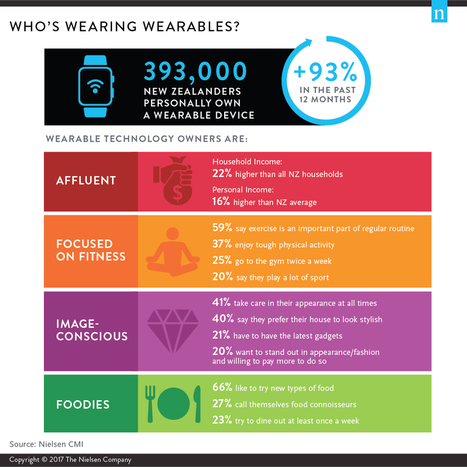




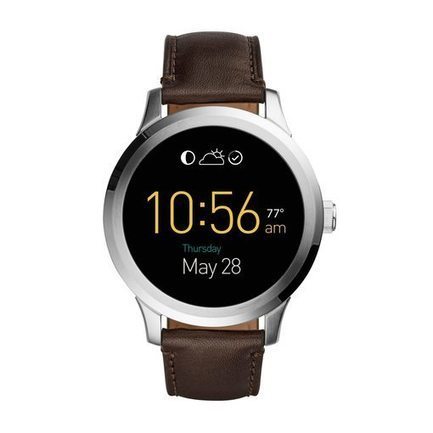
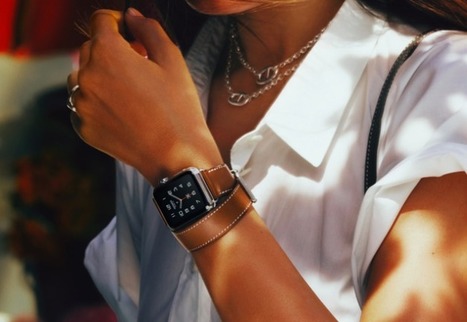
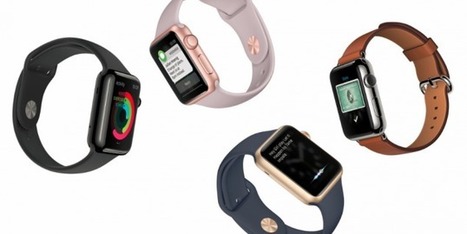

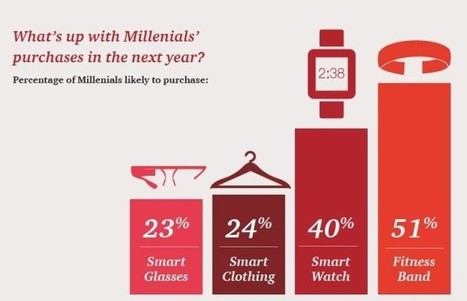
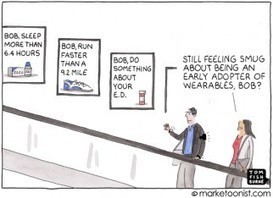

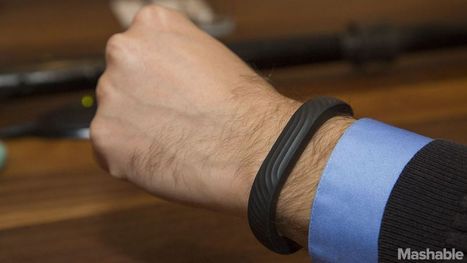


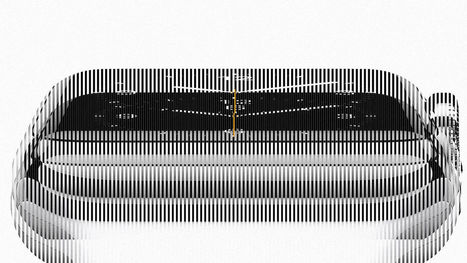
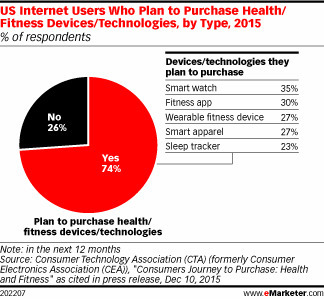









For wearables makers, this infographic on demographics will be useful.